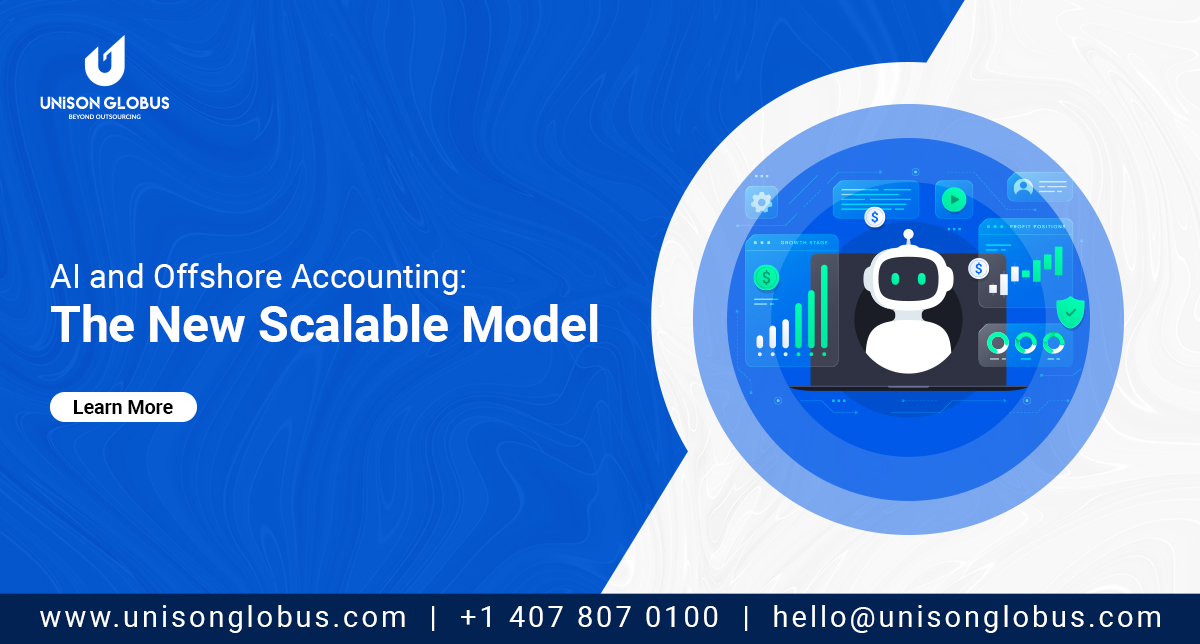AI and Offshore: Friends, Not Foes
That’s exactly what we’ve built at Unison Globus. This collaborative approach was recently featured in Accounting Today, where AI and offshore accounting were recognized as complementary, not competing. Unison Globus further highlighted how AI-powered automation reduced invoice processing time by 40 percent, allowing our offshore teams to focus on review work, client cleanup, and advisory preparation.
The Big Myth: AI Will Replace Offshore Accounting Teams
Prediction vs. Reality in Accounting Automation
What Was Predicted
- Firms will eliminate offshore roles
- Firms will reduce headcount
- AI will significantly lower staffing costs
- Firms would pick AI or outsourcing, not both
What’s Happening in Practice
- 80–90% of firms retained or restructured offshore teams to lead review and QA
- Staff roles evolved—less data entry, more supervision, exception handling, and review
- Automation reduced task time, but increased oversight and governance needs
- High-performing firms are combining the two strategically for better output
Why the Myth Hasn’t Held Up
AI works well when rules are clear and data is clean. But real-world accounting rarely fits into that box. Client records are messy. Scenarios aren’t always standard. And the stakes, whether it’s filing taxes or finalizing financials, are too high for unchecked automation.
That’s why firms haven’t replaced their teams. They’ve redefined their roles.
Today, offshore teams aren’t just processing data. They’re reviewing AI-generated drafts, validating results, resolving edge cases, and flagging inconsistencies that machines miss. They’re still essential, just no longer buried in manual work.
Even major publications such as Accounting Today have noted the shift. Their 2024 feature observed that as AI adoption rises, firms are increasingly pairing it with offshore accounting, not as a fallback, but as a strategic combination. AI handles the volume. People ensure the quality.
And it’s this blended model that firms are now leaning into, not because they have to, but because it works.
The bottom line is – AI hasn’t replaced outsourced teams. It’s changed what those teams do. And for firms looking to scale without compromising quality or client trust, that shift isn’t a threat, it’s an advantage.
Offshore Staffing 2.0: An Evolution, Not Just a Cost Strategy
As firms adopt AI to improve delivery speed and task automation, many are also revisiting how their staffing models support that shift. For most, the answer isn’t more headcount, it’s more structure.
That’s why the conversation around offshoring is evolving. It’s no longer about lowering costs. It’s about building capacity that integrates with the firm, adapts to new technology, and supports long-term growth.
At Unison Globus, we refer to this model as Offshore Staffing 2.0. It’s a different approach to offshore support, one designed to fit how firms work today, not how outsourcing used to be done.
Instead of standalone teams completing tasks in isolation, Offshore Staffing 2.0 offers a more technology-driven accounting support model. It’s about offshore professionals working inside your systems, aligned to your workflows, and focused on consistent delivery.
This is what makes it a scalable accounting team model, not just a cost center, but a functional extension of the firm.
What Makes Offshore Staffing 2.0 Different?
Offshore Staffing 2.0 is shaped by the realities firms face today: talent shortages, increasing client expectations, tighter review cycles, and the growing need to integrate new technology without disrupting delivery. This model is designed to respond to those pressures, not just with people, but with structure.Here’s how it meets the evolving needs of modern accounting firms:
- Continuous training in AI workflows Firms are adopting AI tools for efficiency, but they still need people who know how to use them responsibly. Offshore teams in this model are trained not just in platforms but in how automation fits within accounting workflows, how to validate AI-generated workpapers, handle system exceptions, and align outputs with firm-level review standards. This reduces rework and makes automation viable, not risky.
- Direct integration with your tech stack Disconnected systems are one of the biggest sources of delay and duplication in firm operations. Offshore Staffing 2.0 eliminates this by working directly inside the firm’s environment, from accounting platforms like Xero, QuickBooks, and CCH Axcess to workflow and file-sharing tools like Karbon, Jetpack, or SharePoint. That integration minimizes back-and-forth, gives managers visibility, and ensures offshore work feels like a seamless part of the team, not a bolt-on function.
- Role-based team design
Generic outsourcing creates review fatigue. Firms need clarity on who is preparing, who is reviewing, and who is answering client questions. Offshore Staffing 2.0 brings that structure. Teams are built with defined roles and escalation paths, so work moves in line with how the firm is already organized. This makes delegation easier, reduces partner review time, and improves accountability at each stage of the engagement.
Offshore support isn’t new. But firm expectations have changed. They’re no longer looking for just more hands. They’re looking for a better fit, better flow, and better use of both people and technology.
Offshore Staffing 2.0 is built for that. It reflects where the industry is headed and how leading firms are adapting.
What We’ve Learned from Supporting 150+ Firms Worldwide
Most firms we support already use cloud tools, automation software, and even offshore help. But here’s the pattern: the right tools in the wrong hands still create bottlenecks. And the wrong staffing model, no matter how cost-effective, will slow down even the best processes.
The difference comes down to how firms manage flow. The ones that improve delivery consistently do a few things differently:
- They treat the review as a designed function, not a rescue phase
- They assign complexity based on skill, not location
- And they don’t over-rely on partners to fix what prep teams miss
How This Shows Up in Practice
We’ve helped firms reduce month-end delays, restructure review queues, and shift cleanup work away from senior staff. Not because we did more, but because we helped the team do less of what wasn’t theirs to fix.As we mentioned earlier, Accounting Today featured our model for how it reduces turnaround time, highlighting a 40% drop in invoice processing. But what’s behind that stat is more important: fewer escalation loops, clearer accountability, and front-loaded quality control.
That’s not just about outsourcing. That’s about building systems that hold up under real deadlines.
How AI and Offshore Teams Work Together in Real Accounting Workflows
Firms seeing the best results aren’t separating tech and talent. They’re designing accounting processes where automation and offshore support operate in sync.
Here’s how those systems work inside growing firms:
- Document Collection and Draft Generation Clients upload financials such as bank statements, invoices, and payroll exports into the firm’s cloud environment. AI tools extract the data and auto-generate first drafts: journals, reconciliations, and even return templates. But these aren’t ready to file. They’re a foundation.
- Data Validation and Cleanup
Skilled offshore professionals step in next. They don’t repeat the AI’s work; they build on it. Their tasks often include:
- Cross-checking extracted numbers against source files
- Matching transactions with prior-year context or client-specific rules
- Completing entries that the AI left blank or misinterpreted
In one recent case, a firm reduced review rounds by 30% simply by inserting QA at this point in the process. - Exceptions and Edge Cases
AI can flag anomalies, but it can’t determine what matters. Offshore teams resolve issues like:
- Misclassified journal entries
- Duplicated expenses across systems
- Incorrect carryforward logic in tax returns
Trained teams now resolve 90% of these issues before escalation, saving time at the partner level. - Final Review and Output Preparation Once the file is complete, it returns to the in-house team, often needing minimal changes. Partner review becomes cleaner and faster. And clients receive a delivery that’s complete, accurate, and on time. This is how AI-powered offshore teams operate: automation handles the routine. People ensure it’s correct. Together, they create AI-powered accounting processes that are built to scale.
Why Combining AI and Offshore Is the Competitive Edge in 2025 and Beyond
Firms that combine AI tools with structured offshore support are no longer patching together deadlines. They are redesigning their workflows to move faster, cost less, and support higher-value services.
Here’s where this model is already delivering results:
- Invoice processing is faster when AI handles the intake and offshore teams manage cleanup and categorization
- Month-end close cycles are shortening because reconciliations begin earlier and get flagged automatically
- Tax review queues are moving faster when AI drafts and offshore staff validate entries before they reach the partner
- Sales tax and compliance prep is less manual, with automation handling rate mapping and teams focused on exceptions
As Accounting Today pointed out, offshoring is no longer defined by location or labor cost. It is defined by structure, and firms that align it with automation are gaining a clear edge.
The firms that succeed in 2025 will not be the ones that simply adopt AI or outsource repetitive work. They will be the ones that integrate both into a cohesive, accountable model that is ready to flex with client demand.
This is the future of accounting staffing. Not more hours. Not more hires. Just a better way to work.

 [gtranslate]
[gtranslate] 



